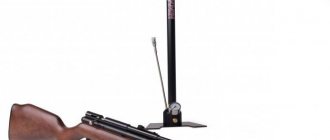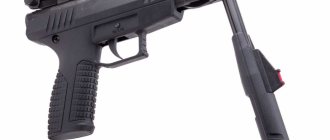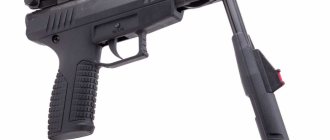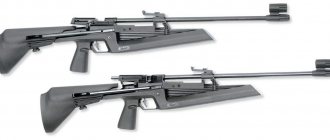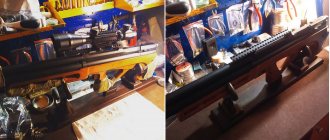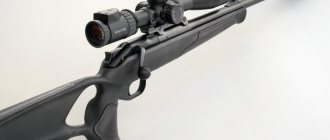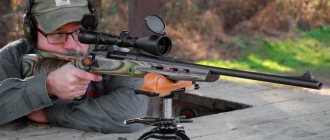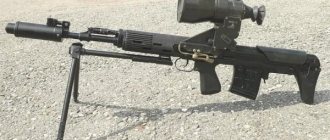To use air pistols safely, you need to be aware that shooting at people from a short distance is prohibited - you can harm a person or, in rare cases, even kill him. Any excess of self-defense techniques or by accident may result in criminal liability.
According to statistics from the Ministry of Internal Affairs, recently more deaths have been recorded from pneumatic weapons than from classic hunting rifles. Most often, the cause of injury is not accidental self-defense, but malicious intent.
To purchase an air pistol, no special permits or licenses are required if the dual energy of the air pistol is less than 7.5 J.
Nizhnekamsk roulette: a schoolboy shot his friend with a pneumatic gun
The shot that ultimately led to death was heard five minutes before the end of the math lesson, investigators are finding out where the teenager got the pistol
Aidar N. (name changed), a 10th grade student at Nizhnekamsk School No. 1, died today at the Children's Republican Clinical Hospital. The teenager was shot by a classmate, the bullet hit him in the eye. Doctors tried to save his eyesight and performed two complex operations, but Aidar died in intensive care. The shooter faces imprisonment for up to fifteen years
The effectiveness of pneumatics for self-defense
According to research, even a few rubber bullets from a traumatic pistol cannot always stop an attacker.
This may be due to the long distance or low power of the traumatic weapon model.
The attacker's outer clothing also reduces the effect of shots. Moreover, each painful blow can only anger the attacker, which will only lead to a worsening of the situation.
There are not many cases recorded when victims managed to fight off criminals with the help of traumatic weapons. But in the case of an air pistol, the chance of fighting off an attacking person is much higher.
However, attacks often occur in the dark in dimly lit places, so it is very difficult for the defending person to hit the attacker, and defense with a weapon can provoke the attacker to use another type of weapon, for example, a knife or a traumatic pistol.
Tips for using an air gun
It’s worth visiting a special shooting range at least once every few months to learn how to shoot with a pneumatic gun.
Such periodic training will help you feel more confident when you need to use a pistol.
In addition, shooting accuracy will improve.
This will increase the likelihood of hitting the attacker, but will greatly reduce the chance of causing injury to him, which will lead to death.
Please note: if it becomes necessary to use an air pistol, it is best to aim at the legs.
If hitting this part of the body does not produce results or it is protected by thick clothing, you need to aim at the hands. The main goal of self-defense is to cause a traumatic shock in the attacker due to injury, but not to cause severe harm.
Possible consequences of using traumatic weapons
When talking about trauma as a means of self-defense, we cannot escape an interesting psychological phenomenon. So, an attacker who aims to encroach on your safety, seeing you take a traumatic pistol out of your pocket, holster or handbag (depending on your gender - don’t think too much), will think that it’s bullshit. Weapons are “less lethal”, so why be afraid of them? And he will continue to approach you. Perhaps even grinning mockingly at the same time - he is a villain, after all. And then you take aim and pull the trigger. But the potential criminal had already come close enough, and the shot turned out to be such that it caused serious bodily harm to him. The enemy is out of action, everything seems to be fine. But here our laws show themselves, which do not at all continue the glorious traditions of the Wild West. And the person defending himself from the criminal suddenly turns into a criminal himself. And again, it turns out, he experiences suffering, but now from the state machine. And the injury didn’t help him much. More likely to do harm.
Any psychopath can buy a gun in a store without certificates or permits and kill a person
How did the accused amass an entire arsenal of weapons at home?
It's simple. Any adult citizen can buy pneumatic weapons with a muzzle energy of less than 7.5 joules and a caliber of up to 4.5 millimeters. This will not require any permissions for use and storage, certificates from a psychiatrist, registrations - only money. Therefore, the number of pneumatic guns that are in the hands of Russians cannot be counted.
The suspect, Alexei Alexandrov, was found only after he purchased components for this type of weapon. And then after the head of the Investigative Committee, Alexander Bastrykin, put pressure on the investigation, demanding to solve the crime.
Anyone can buy a rifle for amateur shooting, regardless of mental health and social status.
How much money did it cost to buy the weapon?
To assemble an entire arsenal of weapons, a shooter will not need a lot of money: judging by the prices in online stores, the minimum cost of an air rifle is 5-7 thousand rubles. Sophisticated copies can reach up to 80 thousand rubles. A factory engineer could afford to buy weapons in the mid-price category even on his salary. Moreover, investigators established that the suspect had prepared for the murder in advance.
The cost of air rifles is relatively low.
Is it possible to kill two girls with a pneumatic gun?
The lethal force of a weapon depends primarily not on the speed of the bullet (for pneumatics it can exceed 350 m/s - the speed of sound), but on its weight and caliber. Depending on the model of the air rifle, which can be purchased without police registration, the bullet weight can reach 2 grams. This is enough for hunting small game and birds. In order to kill a larger animal or person, you need to shoot point-blank, at close range, to hit the brain.
Air guns for self-defense.
Recently, on this site, and not only, questions have begun to be asked very often regarding not the sports performance characteristics of pneumatics, but their capabilities when used for self-defense. Therefore, I wanted to dot the I’s and discuss this issue more thoroughly.
There comes a time in almost everyone’s life when they are puzzled by the problem of choosing a weapon for self-defense. Incomprehensible times, wandering crowds of reckless teenagers, a bunch of visiting unemployed “Ramshans” and “Dzhamshuts”, packs of stray dogs, especially at night in a deserted place, begin to get annoying. After surfing the web, I found many articles regarding the use of pneumatic weapons for self-defense. Is there really an effect?
The issue of using air pistols as a means of self-defense is by no means new. For many years now, various media have regularly published articles and reports on the topic of self-defense, which tell such miracles about the effectiveness of pneumatic weapons that, at times, it becomes simply funny. Here and there, in pursuit of the sensationalism of the material, I even noticed such a definition of pneumatic weapons as “killer weapons.” The desire to have a powerful, “almost real” pistol without spending time on obtaining a license leads people to gun stores, where they buy themselves some kind of “Makarov air pistol” and carry it, satisfied and confident in their safety.
As a rule, gas balloon pneumatic pistols are easily available, look beautiful, are inexpensive... The shot is fired using the energy of compressed carbon dioxide located in special replaceable cartridges. Most gas-cylinder pneumatic pistols copy the appearance of real-life models of military weapons - from the Makarov pistol to the Bereta 92. They are intended for sports and recreational shooting at short distances. It seems all great, but let's look at all this more carefully.
Let's consider the external resemblance to military weapons. Yes, most models of air pistols resemble the shape of combat models in appearance. They repeat the shape, but are not a copy: for a person who has even a superficial understanding of weapons, it will not be difficult to distinguish an air pistol from a combat pistol. The main distinguishing features of pneumatics are the presence of a clamping screw on the handle and the small diameter of the hole at the muzzle. Let's take, for example, the most common air pistol in Russia, the MP-654k, which many call a copy of the Makarov pistol. You can offhand name a dozen differences in the appearance of the “copy” from its combat relative. Some of these differences are visible to the naked eye from a distance of several meters: the small diameter of the hole on the muzzle, a different shape of the front part of the bolt, a clamping screw sticking out of the handle, the absence of an ejector, inscriptions on the bolt, in the end. In general, a person who has at least once seen a combat PM will always be able to distinguish it from pneumatics.
Of course, now in new models they also make a hidden clamping screw and an imitation of a 9mm muzzle cut, but there is still a lot left. There are also some factors that can confuse the process of “identifying” a pistol: poor lighting and cosmetic tuning of the pistol (making it more similar to its combat counterpart). In general, I do not think that people will be afraid of a pistol, and one demonstration of it will stop criminals and put them to flight. This is possible in countries where military weapons are widely distributed among the civilian population. In our country, pneumatic, gas and “traumatic” weapons are much more common, which no one is afraid of, especially in a state fueled by alcohol and youthful enthusiasm. So, with a much higher probability, no one will be afraid of a gun.
By the way, a hit from an air pistol breaks a beer bottle very beautifully. And even a more durable champagne bottle. And among supporters of the use of pneumatics for self-defense, this is often an argument in favor of the fact that pneumatics are effective against humans. Let's look at this issue in more detail. First, let's understand that gas-cylinder pneumatic pistols and revolvers, which are freely sold in gun stores and sporting goods stores, have muzzle energy from 3 to 7.5 joules and have a caliber of 4.5 mm . These restrictions are introduced by the Law “On Weapons”. Such pistols fire balls or bullets, the mass of which does not exceed one gram ( on average, the mass of a bullet for pneumatics is 0.5 g ). Pneumatics with a muzzle energy of more than 7.5 joules and a caliber of more than 4.5 mm are subject to registration and are not freely sold.
How can a bullet stop an aggressive person? The stopping effect can be achieved in two ways. The first is the high penetrating effect of the bullet , which causes damage to vital organs and leads to death. Moreover, in order for this death to occur before this person does something terrible to the shooter, you need to hit the head or heart. Therefore, throughout the world, even 22-caliber firearms are considered ineffective. The second way is that the bullet must have a large mass and energy, which is transferred to the target upon impact . This principle is the basis of traumatic weapons, where the bullet, theoretically, has no penetrating effect at all. Attention, question: according to which of these two principles can a tiny and weightless bullet from an air pistol, which has very little energy, stop a person?
Let's compare the most important parameters of a shot from an air pistol with the same parameters for “traumatic” cartridges 18x45 (PB “Osa”, “Strazhnik”) and, say, 9mm PA (“Makarych” and other “rubber arrows”). At the same time, we’ll give pneumatics some head start: we’ll proceed from its maximum muzzle energy of 7.5 joules, despite the fact that the vast majority of gas pistols fall significantly short of this figure. Again, we will make a comparison based on the stated indicators, which may differ slightly from the actual ones - not in favor of pneumatics.
What do we see? In terms of such important parameters as bullet mass and its energy, a ball fired from a pneumatic gun is significantly inferior to “traumatic” cartridges. The mass of the pneumatic ball is 23 times less than the mass of the Osa bullet, and its energy is approximately 9 times lower. Considering the fact that even a hit from the Wasp is not always effective, it is not worth talking about the effectiveness of the stopping effect of such a ball. A bullet from the 9mm PA cartridge is closer in characteristics to pneumatics and has a comparable mass. But, again, in terms of muzzle energy, pneumatics are 5-7 times inferior to this cartridge (depending on the manufacturer of the cartridge and the pistol for shooting). I hope no one doubts the fact that a ball fired from a pneumatic gun cannot provide a sufficient impact. The transferred energy of 7.5 joules is clearly not enough to provide a stopping effect.
What do we have in terms of penetrating ability? The extremely small diameter of the ball (less than 4.5 mm) allows it to pierce the skin even at such low energy if it is not protected by thick clothing. Roughly speaking, it breaks through the skin and gets stuck in the fat layer or muscles on the surface itself. The result will be a small clean wound, possibly accompanied by a hematoma. It hurts? Yes, definitely. Can this stop a person and deprive him of his ability to continue active actions? No. And if it hits an area that is covered by more or less thick clothing, then the ball most likely will not even reach the skin. And if the attacker is drunk, he may not even notice the ball under the skin. But the pneumatic gun hits bottles, without a doubt, very beautifully!
A hit to the head will certainly not go unnoticed. I think it is obvious to everyone that a gas-cylinder pneumatic pistol is not capable of piercing a skull. Getting hit in the face will cause a lot of pain, but again, can't stop it. The worst thing a commercially available air pistol can do is knock out an eye with a precise hit. In other words, the only way to stop an attacker with a pneumatic weapon is to shoot balls all over his face with a powerful pistol, damaging his eyes.
Power of traumatic pistols
According to Russian legislation, the muzzle energy when fired from a civilian traumatic pistol should not exceed 91 J. For service injuries, the limit is different - 150 J. For comparison, the Makarov pistol has a muzzle energy of about 300 J. Thus, if a person with a traumatic pistol is drawn in into a shootout with an attacker armed with a combat pistol - his chances are slim.
There are homemade ways to increase the power of traumatic weapons, but their use does not give one hundred percent results. In addition, there is a high risk that this could lead to unpredictable consequences.
But don’t forget: even the existing power of a traumatic pistol is enough to cause serious bodily injury or even kill a person. Be careful!
What does the legislation say?
Issues regarding the acquisition and use of pneumatic weapons are regulated by the federal law “On Weapons” of the Russian Federation. According to current legislation, a person who has reached the age of 18 can purchase an air pistol.
The question often arises: is it possible to carry an air pistol in a public place? Yes, you can wear it, but taking it out without a good reason is not recommended, as this may result in a fine.
Is it possible to carry a loaded pneumatic gun? Yes, you can carry it in a loaded state, otherwise what is the point of it in self-defense, but you must always remember about safety measures and keep the barrel on safety.
Is it possible to use air guns if the attacker is not armed? Yes, it is possible, but only in cases where life or health is in serious danger. Otherwise, the attacker, if injured, may turn into a victim, and the shooter will be in trouble.
The effectiveness of pneumatics for self-defense
According to research, even a few rubber bullets from a traumatic pistol cannot always stop an attacker.
This may be due to the long distance or low power of the traumatic weapon model.
The attacker's outer clothing also reduces the effect of shots. Moreover, each painful blow can only anger the attacker, which will only lead to a worsening of the situation.
There are not many cases recorded when victims managed to fight off criminals with the help of traumatic weapons. But in the case of an air pistol, the chance of fighting off an attacking person is much higher.
However, attacks often occur in the dark in dimly lit places, so it is very difficult for the defending person to hit the attacker, and defense with a weapon can provoke the attacker to use another type of weapon, for example, a knife or a traumatic pistol.
Is a pneumatic gun effective for self-defense?
So, it’s worth understanding how effective the use of pneumatic equipment is when it comes to self-defense. Skeptics claim that a traumatic pistol makes no sense and are ready to prove their claims with videos. However, do not forget that rubber bullets are used in trauma. They don't cause much damage even if they really want to, and the only thing they can leave is a bruise.
Another thing is pneumatic. Such devices use a lead bullet or a solid ball as a projectile. Both are capable of penetrating flesh and causing injury or even death.
Not every pistol is suitable for self-defense. Here are a few points to consider:
- Pneumatics with a shot force of 3 J are too weak for self-defense. Such weapons are usually used for entertainment.
- When choosing an air pistol, you need to look at the muzzle energy indicator and the velocity of the ballistic projectile. There are models that may have a small first indicator and a second one suitable for self-defense.
- The best option that can be used for self-defense is a pistol with a power of 7.5 J and a bullet speed of 200-300 m/s. In this case, the projectile is able to penetrate right through, but not harm vital organs.
- Special attention should be paid to the size of the pistol, since it must be worn under clothing so that passers-by do not run away.
If we consider powerful pneumatics, the muzzle energy of which exceeds 7.5 J, then it will certainly be effective as a weapon for self-defense. However, this increases the risk of severe injuries that can lead to instant death. In addition, such pistols are sold only to those who have an athlete’s passport or a hunting license.
It is still worth answering the question of whether using an air pistol to scare away an offender is effective. It is possible if you do everything right. Firstly, sharpness is important so that the attacker’s instinct of self-preservation kicks in and he doesn’t have time to notice that the victim is holding a pneumatic gun. Secondly, there is no need to shoot at unprotected places on the body, injury to which can lead to death.
Features of choosing bullets
To achieve maximum effect, the bullet must have high kinetic energy. Upon contact, it is transmitted to the body. The optimal bullet weight for an air pistol is 6-9 grams. In addition, the projectile must have a large cross-sectional area.
The bullet weight of the 9*18 PM cartridge is 6.1 grams. The initial speed of such a projectile when fired from the pneumatic version of the Makarov pistol is equivalent to 315 m/s. If a spherical version of the bullet is used, this figure drops to 110 m/s. When such a projectile enters the skin, it causes shallow wounds. Parts of the body covered by clothing will remain completely undamaged.
Will a person die from a pneumatic gun shot to the temple?
Before moderation, the author was also still interested in which weapon would suit him.
So, on the question:
I didn’t set myself such a goal myself. Didn't do any tests. Accordingly, not a single temple was damaged.
The result will depend on:
- Muzzle energy of a weapon (initial kinetic energy of a bullet at the moment it leaves the barrel)
- Weapon caliber (bore diameter and corresponding bullet)
- Initial bullet speed
- Bullet shapes (spherical/pointed)
- A specific type of air gun (in particular, barrel length)
- Distances from the point of the shot to the target (temple)
- Strength of the temporal bone. It is impossible to predict how the bullet will behave inside (if it pierces the bone) and what damage it will cause. There cannot be a 100% guarantee, but the chances are pretty good.
The category of pneumatic weapons - hunting and sports with a muzzle energy from 7.5 to 25 J, may well cope with this task (you must also take into account that there are samples of rifles with a muzzle energy of about 280 J (.)). But its acquisition and storage requires permission from the Ministry of Internal Affairs. There are calibers 4.5; 5.0; 5.5; 6.35 mm, but there are also more: 7-12 mm. The 9 mm caliber allows you to hunt not only game birds, but also large ones, weighing 60-80 kg. From here it is easy to conclude what consequences can happen to a person from being hit by such a bullet. For comparison, one of the most common calibers of firearms is also 9 mm. It is probably not necessary to die from a hit to the temple.
And here you can clearly see the consequences of shooting (far from the most professional) from a weapon that is not the most powerful, with a caliber of only 4.5 mm. I think sheet steel is stronger than temporal bone.
So, if you decide to become a killer with a pneumatic gun, having a minimum of problems, then you need to reach the age of 18, come to a gun store and ask to pick up the most powerful rifle with a muzzle energy of 7.5 J and a larger caliber. No permission is required for this category. But a rifle with a caliber of 6.35 and a muzzle energy of up to 7.5 J can cost 50-100K. This means you can try 4.5 J somewhere within 10K. Here's an option. 7500 rub.
And since the question is posed this way, then theoretically, after being shot in the temple, a person can fall, hit his head on the curb and die, for example.
How dangerous is the average air pistol? Can the consequences last for the rest of your life?
The temple is such a place that a simple blow from your fist can kill a person. I'm already silent about the air pistol. But there is no 100% guarantee; even from a gunshot there are cases when people survived.
It seemed that the person was going to test it on himself((then the crackers would not be useful.
What is the most painless death?
They can endlessly give you various examples of painless deaths with one or another justification, until everyone agrees that there is no such thing as the most painless death - there are deaths that share this title among themselves. Therefore, obviously, it is much more interesting to understand what makes this or that death painless.
First, what is pain? Let’s decide on the formulation of the concept and analyze it in order. From the point of view of medicine (what other field of knowledge, if not medicine, is interested in studying aspects of human dying), pain is a kind of unpleasant sensation, a sensory and emotional experience that is associated with real or perceived damage to the body, and, most often, at the same time its reaction , which mobilizes functional defense systems against a real or suspected pathogenic factor. Sensory means perceptible, associated with perception, sensations of a physical and physiological nature (like the sensation of heat or cold) (and, like the sensation of heat or cold, capable of being both real, as in the case of a burn or frostbite, and imaginary, as in case of alcohol intoxication and inhibition of the thermoregulation center). Emotional means based on feelings of a mental, psychological nature. Thus, the sensation of pain has physiological and psychological sides; it can be objective and subjective, real and imaginary.
Secondly, how does pain occur? Based on the basic characteristics of pain defined above and their various combinations, let’s figure out how pain occurs at the level of the body from the point of view of science (as always, greatly simplifying, of course). Pain has a beginning and an end . And no, I'm not talking about the start time and end time of the pain - I'm talking in the "territorial" sense. Physiological pain begins with nociceptors (pain receptors, if you will), passes along nerve fibers through the spinal cord and ascending structures of the brain and reaches certain areas of the cerebral cortex, roughly speaking, responsible for conscious consciousness. This is how the pain impulse travels from its source to awareness and, in fact, the feeling of pain. There are cases when nociceptors are not involved in this, and pain is formed either along the nerve or in the brain structures themselves, thus causing pain. As we see, in any case, the very sensation of pain is “created” in the brain, and two sources can lead to it: irritation of peripheral pain receptors or disturbances in the functioning of the nervous system itself.
So, what kind of death will be painless? Any death will be painless in which the signal from pain receptors, for one reason or another, does not reach the central nervous system and in which no signals about the subjective sensation of pain arise in the central nervous system. This means that a painless death must turn off or destroy the cerebral cortex before pain impulses arise along one or another part of the path of pain into consciousness. Nuclear explosion? Instant flattening? Falling head first? Absolutely painless deaths - this ensures the proper speed of their occurrence. Stroke in a dream? Carbon monoxide poisoning? Death from freezing under thick snow? Absolutely painless deaths - this is ensured by the fact that the body is asleep (stroke in sleep) before death or falls asleep as it occurs (carbon monoxide poisoning, as well as cooling of the body, ensures blackout and sleep). And so on.
"The child is always inclined to take the gun"
The school administration remains silent; classmates cannot believe that the joke with the gun turned deadly. The Department of Education of the Nizhnekamsk District conducted an inspection at the school on February 13, during which an interesting fact emerged - despite the fact that the injury was serious, the management of the educational institution did not call an ambulance for the boy. The first thing the frightened teachers did was call his mother, she personally came and took her son to the hospital. The director explained this by saying that they allegedly had to wait a long time for the ambulance. The Nizhnekamsk Education Department refrains from commenting to the press, citing the fact that the Investigative Committee is looking into the case.
According to Alexander Mikhailov, a retired FSB major general, the school is not directly to blame; responsibility for the children’s actions lies with the parents.
— The school is always at risk, because the unpredictability of children is so high that teachers do not anticipate when aggression may appear. If there is a serious deformation of the personality at the family level, then the school will not correct it. We live in a world where about 80 percent of families are classified as dysfunctional. I don’t mean the material component, but the lack of communication between children and parents - all communication comes down to a smartphone. As a result, children perceive their parents as losers; for them, the bully is more authoritative than the father,” says Mikhailov.
In this case, the parents were unable or unwilling to explain to the child the danger that weapons can pose. “Pneumatics” in comparison with firearms or “traumatic weapons” are considered a “toy”, but, as the last case proved, they can also cause tragedy.
- If a mandatory safe is provided for firearms, which excludes access to the “barrel” of children, then pneumatic weapons are lying around who knows where, and, of course, a child is always inclined to take the “barrel” and boast, and what follows from this, we understand perfectly well - he can carelessly or deliberately shoot,” says the expert.
“The school is always at risk, because the unpredictability of children is so high that teachers do not anticipate when aggression may appear,” says Alexander Mikhailov. Photo 1080.plus
Summary
Today there are traumatic pistols that look like real ones, but shoot a third as hard as normal combat pistols. This is quite enough to increase your sense of security and self-confidence. But it will not always help you cope with a real threat.
The psychological effect of traumatic weapons on experienced attackers is not so great. But they may be surprised by the pain they receive during a collision with you. But try not to kill him or cause him serious injuries - in this case, you will spend a long time proving that you yourself are not a criminal.
The most dangerous areas of the body
As mentioned above, contact with pneumatic guns in different parts of the body entails different consequences. The most dangerous areas on the human body include:
- temporal areas;
- eyes;
- neck, throat area;
- breasts (in women);
- head;
- groin area.
Under no circumstances should you shoot into these areas. Contact with these parts of the body can cause severe injury, even death. Also, under no circumstances should you point the weapon at yourself.
